
10 Countries Where Men Far Outnumber Women
While men make up about 50.4% of the global population on average, some countries have significantly higher percentages of men. Although 105 boys are born for every 100 girls, the elevated male ratios in these countries are not solely due to biological factors. Instead, immigration plays a major role, as many male immigrants move abroad in search of better labor opportunities. The countries with the highest male-to-female ratios are Qatar, with 71.52%; the United Arab Emirates, with 64.01%; the Maldives, with 62.10%; and Oman, with 62.08%.
Top 10 Countries Where Men Far Outnumber Women
| Rank | Country | Percentage of Men |
|---|---|---|
| 1 | Qatar | 71.52% |
| 2 | United Arab Emirates | 64.01% |
| 3 | Maldives | 62.10% |
| 4 | Oman | 62.08% |
| 5 | Bahrain | 62.08% |
| 6 | Kuwait | 61.16% |
| 7 | Saudi Arabia | 60.65% |
| 8 | Seychelles | 55.18% |
| 9 | Palau | 53.90% |
| 10 | Bhutan | 53.50% |
Qatar - 71.52% Of The Population Are Men

Qatar, by far, has the highest male population percentage in the world, with men making up 71.52% of its residents. Immigration is the main contributor to Qatar’s significant gender imbalance, with many young men, particularly from India and Nepal, migrating in search of higher-paying jobs, typically in the manual labor field. Many male workers arrived before the 2022 World Cup to build infrastructure for the event. A large number of migrants, however, reported wage theft and labor abuse, issues that persist today as the labor market has slowed following the tournament's conclusion.
United Arab Emirates - 64.01% Of The Population Are Men
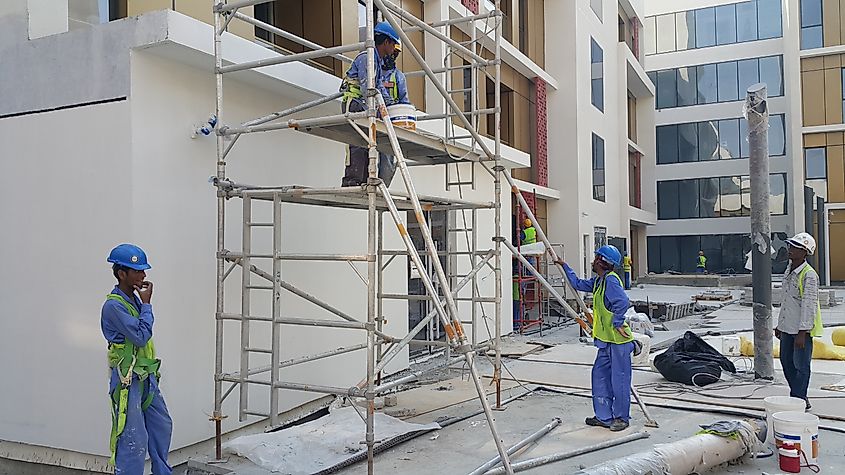
64.01% of the population consists of men in the United Arab Emirates, ranking it second in terms of the men-to-women ratio. Similar to Qatar, immigrants make up a significant portion of the country’s population, accounting for about 88% of the total residents. Many of these immigrants are men in search of labor opportunities, with 93% of the male population active in the labor force, compared to only 55.4% of the female population. Some of the most common nationalities that immigrate to the UAE are Indian, Pakistani, Bangladeshi, and Filipino.
Maldives - 62.10% Of The Population Are Men
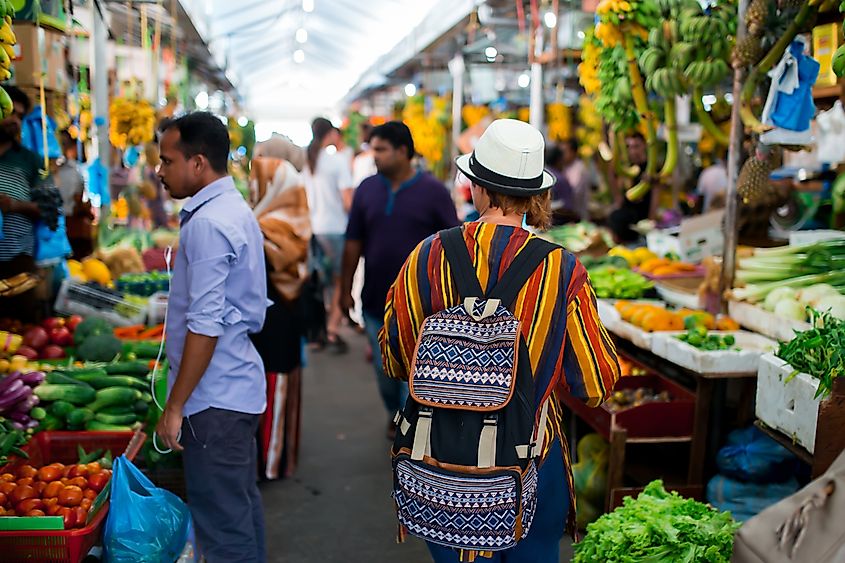
With 62.10% of its population being male, the Maldives ranks third globally in the male-to-female ratio. Per the Maldives’ census, 108 baby boys are born per 100 baby girls, partly contributing to the high percentage of men. However, the most important factor regarding the country’s gender discrepancy is immigration. As of 2021, The Maldives received 182,666 international migrants, with around 89% of the immigrant population being men. The majority of these immigrants live in urban, congested areas in industries such as construction, tourism, agriculture, and domestic/care industry.
Oman - 62.08% Of The Population Are Men
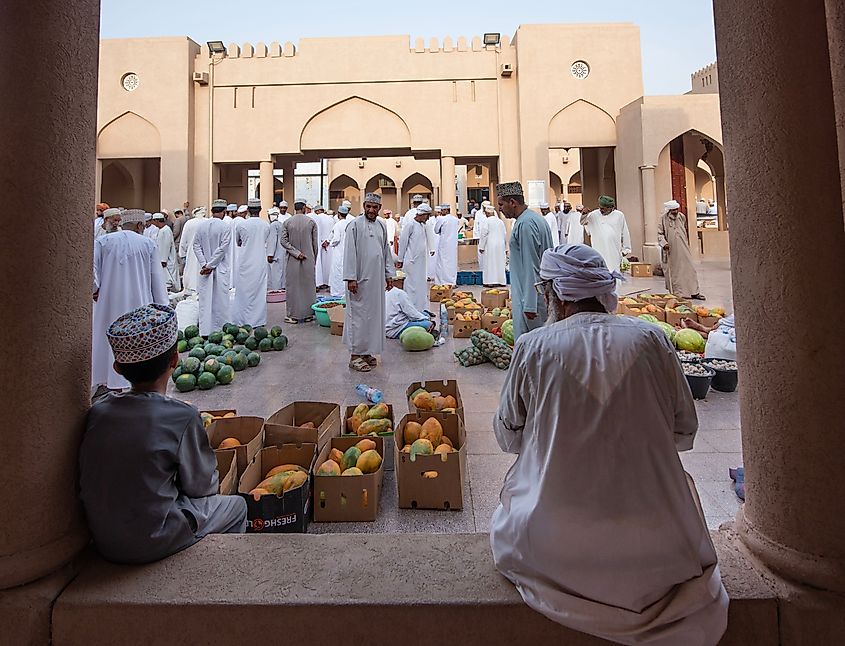
Over the past two decades, immigration in Oman has skyrocketed, leading to a high male population, with men accounting for 62.08% of its residents. Due to infrastructural projects in the country, the country has been receiving a large number of migrant workers, contributing to one of the highest population growth rates in the world, at around 9% annually. Roughly 29% of the country’s population are immigrants, with the majority of the immigrants being Bangladeshi, Indian, Pakistani, Filipino, and Egyptian. However, in recent years, the country has implemented various labor-related policies to prioritize the employment of Omani citizens, contributing to a decrease in immigrants, which may affect gender distribution in the coming years.
Bahrain - 62.08% Of The Population Are Men
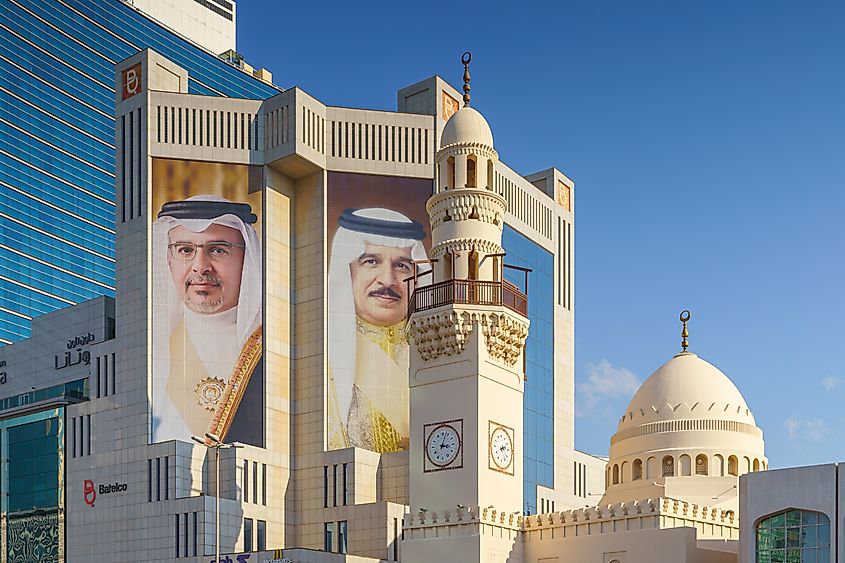
Bahrain has nearly exactly the same percentage of men in its population as Oman, at 62.08%. The reason for its high percentage of men is the same as that of the other Gulf countries, such as Qatar and the United Arab Emirates. Nearly half of Bahrain’s population are immigrants, and the majority of them are men looking for job opportunities. As of 2020, only 27.7% of the immigrant population were women, and 7% were children, while the rest were men. Working conditions for these migrant workers are often far under par, and they are much more likely to experience discrimination in the workplace, wage theft, or even have their passports withheld from their employer to prevent movement.
Kuwait - 61.16% Of The Population Are Men
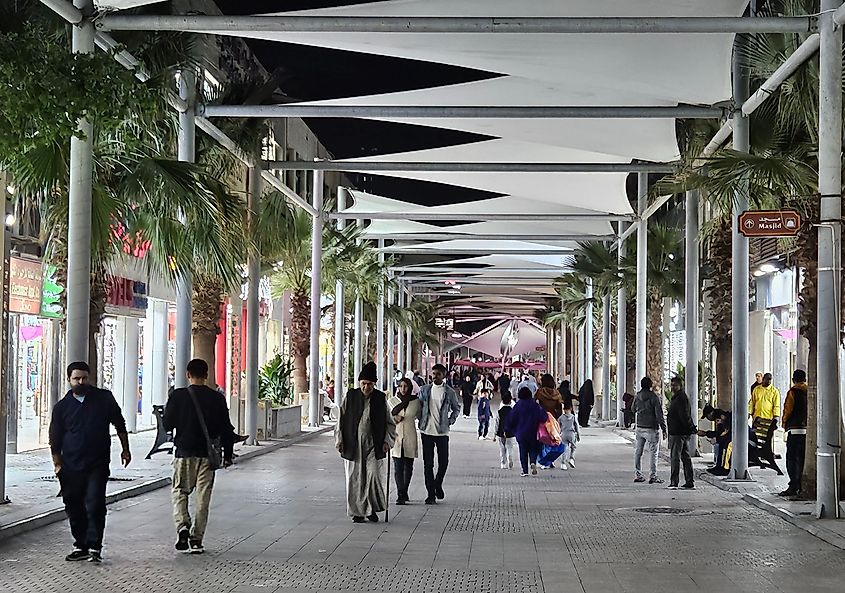
Receiving high numbers of immigration, 61.16% of Kuwait’s population is men. Immigrants in Kuwait account for approximately 60% of the country’s population and 78% of the workforce, making the economy very dependent on migrant labor. Over the past century, infrastructural projects and the oil industry, in particular, have drawn in a large number of male migrant workers, with the government having agreements with various Southeast and South Asian countries as well as several in Africa. Due to high immigration numbers in recent years, the government has implemented various immigration reform policies that may, as a result, decrease the percentage of men in the population in the following years.
Saudi Arabia - 60.65% Of The Population Are Men

With men representing 60.65% of Saudi Arabia’s population, it ranks seventh in terms of the male-to-female ratio. According to Saudi Arabia’s 2022 Census, foreign residents accounted for 41.6% of the country’s population due to infrastructure and development plans that began in the late 20th century, drawing in high numbers of foreign labor, particularly from Palestine, Egypt, Yemen, and other Arab countries. As in the majority of the other Gulf Countries, men are overwhelmingly the ones to immigrate, representing 76.5% of the total foreign resident population.
Seychelles - 55.18% Of The Population Are Men
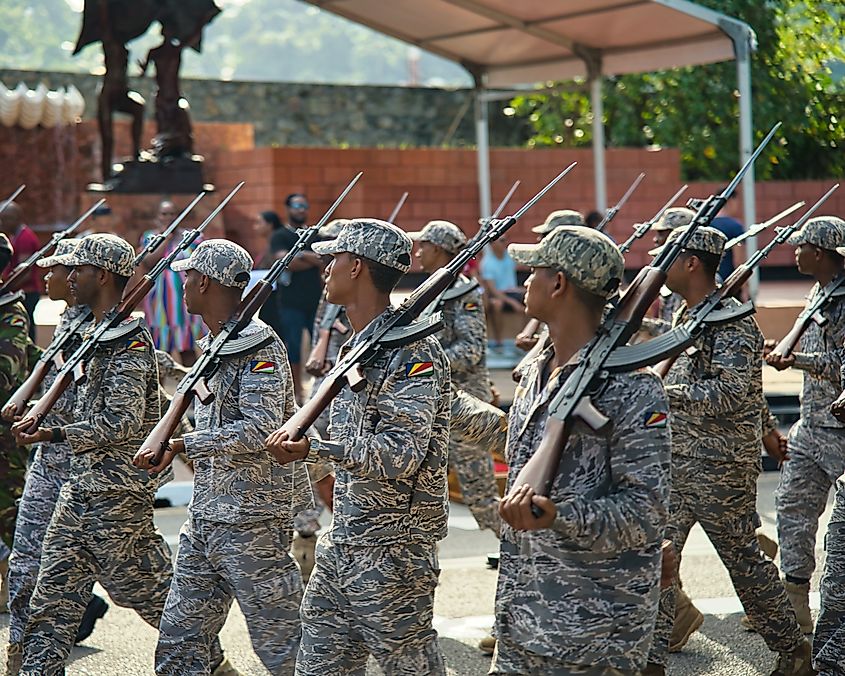
Seychelles, a small East African archipelago country, has a male population of 55.18%, which is largely a result of immigration. In 2020, the country registered over 13,000 migrants, 70% of which were male. Additionally, with a population of approximately 120,000 residents, Seychelles' small size means that the impact of the immigrant population on overall demographics is more pronounced. Seychelles’ emerging economy has attracted a large number of immigrants to the small island country over the past few decades, with many migrant workers finding jobs in the tourism, fishing, and construction industries.
Palau - 53.90% Of The Population Are Men
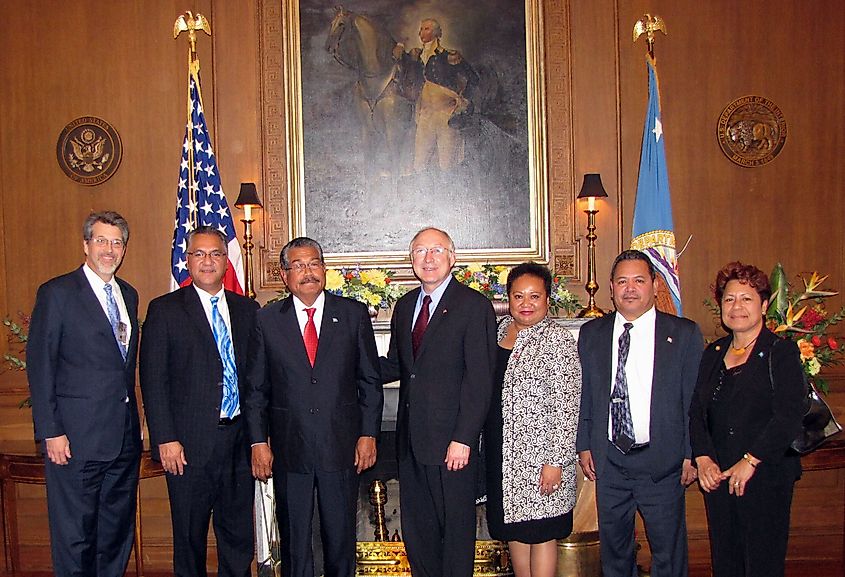
Palau, an island country in the Micronesian region in Oceania, has the ninth-highest male population in the world, representing 53.90% of its residents. Palau also has a high percentage of immigrants in its population, representing roughly 28.1% of the country’s residents, which similarly affects the overall gender distribution. The country has a per capita income that is approximately twice that of the Philippines, drawing in immigrants in search of better job opportunities. Tourism, fishing, and subsistence agriculture are the three major industries that drive the country’s economy.
Bhutan - 53.50% Of The Population Are Men

Bhutan, a South Asian country with a population of nearly 800,000, has a male demographic of 53.50%. Situated between China and India, its rugged mountains and forests make it one of the geographically isolated countries worldwide. Despite this isolation, nearly 54,000 people in the country are immigrants, which represents around 7% of the population. Although this number is not as big as some of the other countries mentioned above, only about 8,000 of these immigrants are women, leading to a high gender discrepancy in the immigrant population that affects the overall gender demographics.
Final Thoughts
A common factor among all these countries with high male ratios is immigration. Many of these countries have fast-growing infrastructure and development projects that require manual labor, attracting immigrants from countries in South Asia and Africa. Other countries, such as the Maldives and Seychelles, have bustling tourism industries as well, offering attractive work opportunities to those from neighboring countries. With immigration slowing in countries such as Qatar and the United Arab Emirates, there may be a drop in the male population percentage as well, potentially altering the rankings in the years to come.
All Countries And Regions Where Men Outnumber Women
| Rank | Country | Percentage of Men |
|---|---|---|
| 1 | Qatar | 71.52% |
| 2 | United Arab Emirates | 64.01% |
| 3 | Maldives | 62.10% |
| 4 | Oman | 62.08% |
| 5 | Bahrain | 62.08% |
| 6 | Kuwait | 61.16% |
| 7 | Saudi Arabia | 60.65% |
| 8 | Seychelles | 55.18% |
| 9 | Palau | 53.90% |
| 10 | Bhutan | 53.50% |
| 11 | Brunei Darussalam | 53.14% |
| 12 | Equatorial Guinea | 52.77% |
| 13 | Greenland | 52.64% |
| 14 | Malaysia | 52.41% |
| 15 | Malta | 51.89% |
| 16 | Faroe Islands | 51.72% |
| 17 | Singapore | 51.69% |
| 18 | Jordan | 51.61% |
| 19 | India | 51.59% |
| 20 | Bonaire, Sint Eustatius and Saba | 51.59% |
| 21 | Papua New Guinea | 51.47% |
| 22 | Marshall Islands | 51.26% |
| 23 | Iceland | 51.20% |
| 24 | Tuvalu | 51.15% |
| 25 | Andorra | 51.15% |
| 26 | Solomon Islands | 51.13% |
| 27 | Algeria | 51.01% |
| 28 | Saint Vincent and the Grenadines | 50.99% |
| 29 | China | 50.98% |
| 30 | Nauru | 50.93% |
| 31 | Côte d'Ivoire | 50.92% |
| 32 | Senegal | 50.88% |
| 33 | Cabo Verde | 50.87% |
| 34 | Libya | 50.85% |
| 35 | Iran (Islamic Republic of) | 50.84% |
| 36 | Pakistan | 50.80% |
| 37 | Gabon | 50.80% |
| 38 | Niger | 50.77% |
| 39 | Guam | 50.70% |
| 40 | Yemen | 50.65% |
| 41 | French Polynesia | 50.60% |
| 42 | Nigeria | 50.56% |
| 43 | American Samoa | 50.51% |
| 44 | Vanuatu | 50.50% |
| 45 | Egypt | 50.49% |
| 46 | Afghanistan | 50.47% |
| 47 | Belize | 50.47% |
| 48 | Mali | 50.46% |
| 49 | Morocco | 50.44% |
| 50 | Uzbekistan | 50.44% |
| 51 | Timor-Leste | 50.41% |
| 52 | Norway | 50.39% |
| 53 | Cyprus | 50.38% |
| 54 | Sweden | 50.36% |
| 55 | Honduras | 50.35% |
| 56 | Samoa | 50.34% |
| 57 | Luxembourg | 50.32% |
| 58 | Togo | 50.32% |
| 59 | Comoros | 50.29% |
| 60 | Lao People's Democratic Republic | 50.25% |
| 61 | United States of America | 50.25% |
| 62 | Indonesia | 50.23% |
| 63 | Cayman Islands | 50.21% |
| 64 | Slovenia | 50.21% |
| 65 | Grenada | 50.18% |
| 66 | Iraq | 50.17% |
| 67 | Chad | 50.16% |
| 68 | Madagascar | 50.16% |
| 69 | Paraguay | 50.15% |
| 70 | Benin | 50.14% |
| 71 | Bolivia (Plurinational State of) | 50.11% |
| 72 | Ethiopia | 50.11% |
| 73 | Somalia | 50.10% |
| 74 | Saint Helena | 50.09% |
| 75 | Turks and Caicos Islands | 50.07% |
| 76 | Dominica | 50.06% |
| 77 | Panama | 50.01% |











